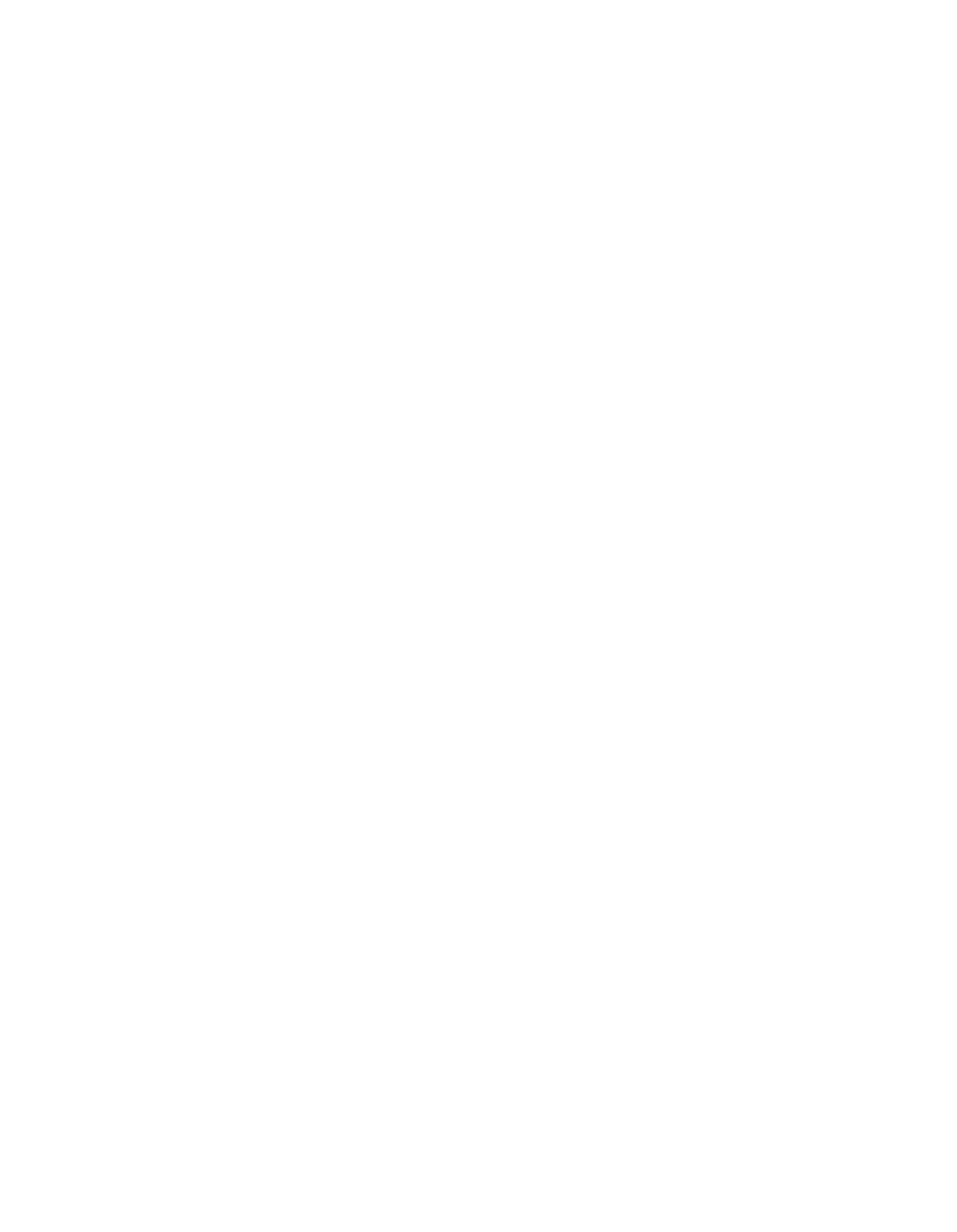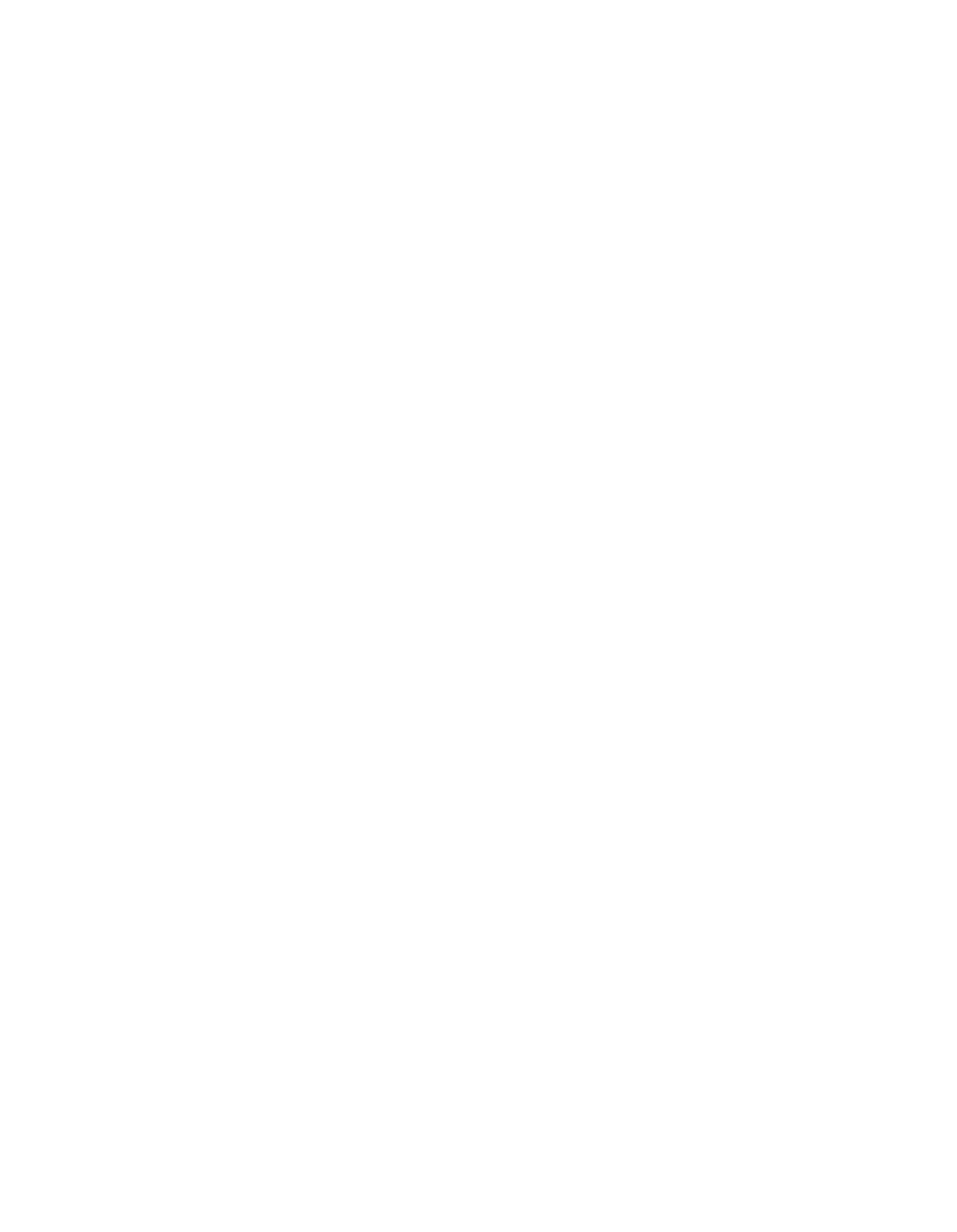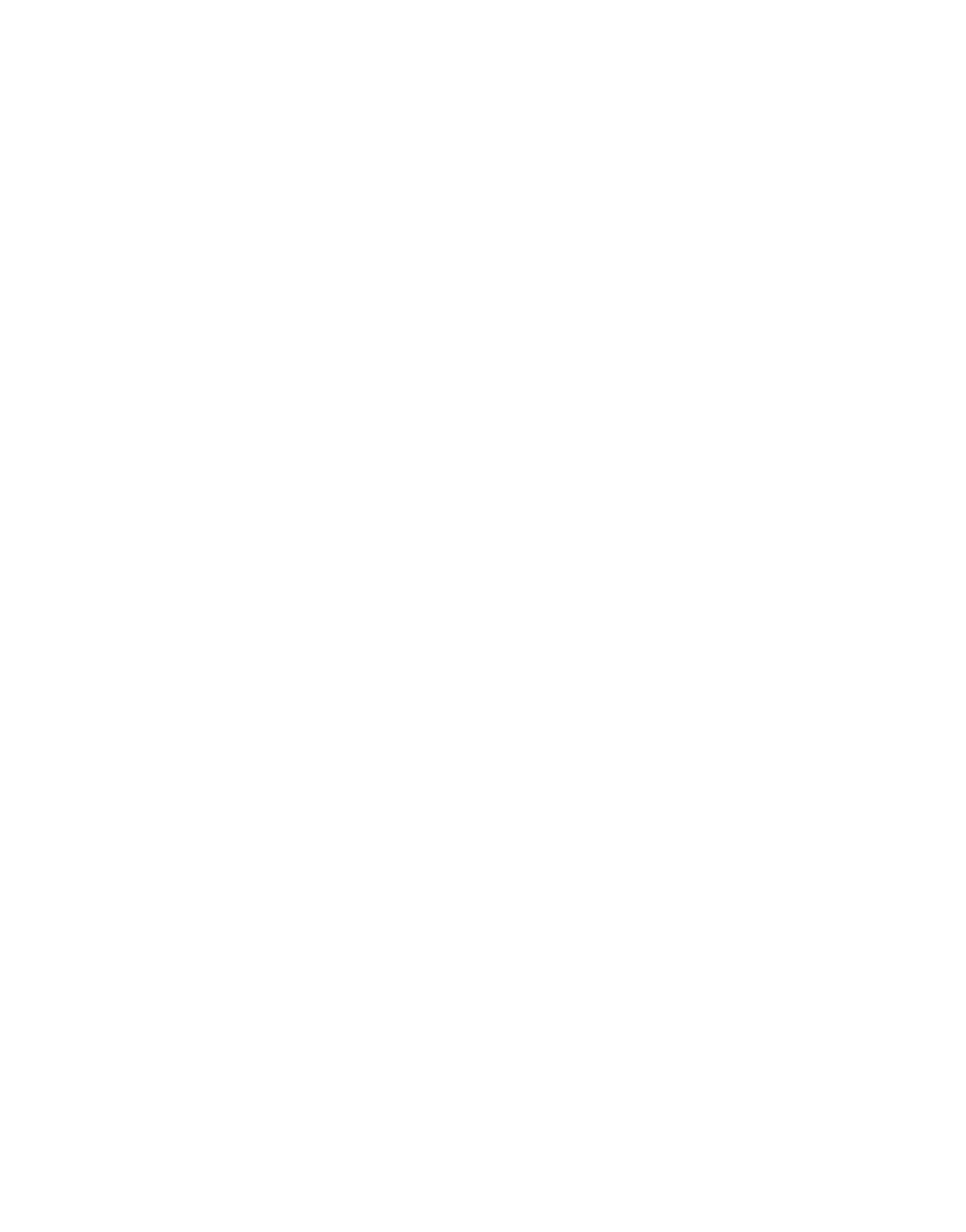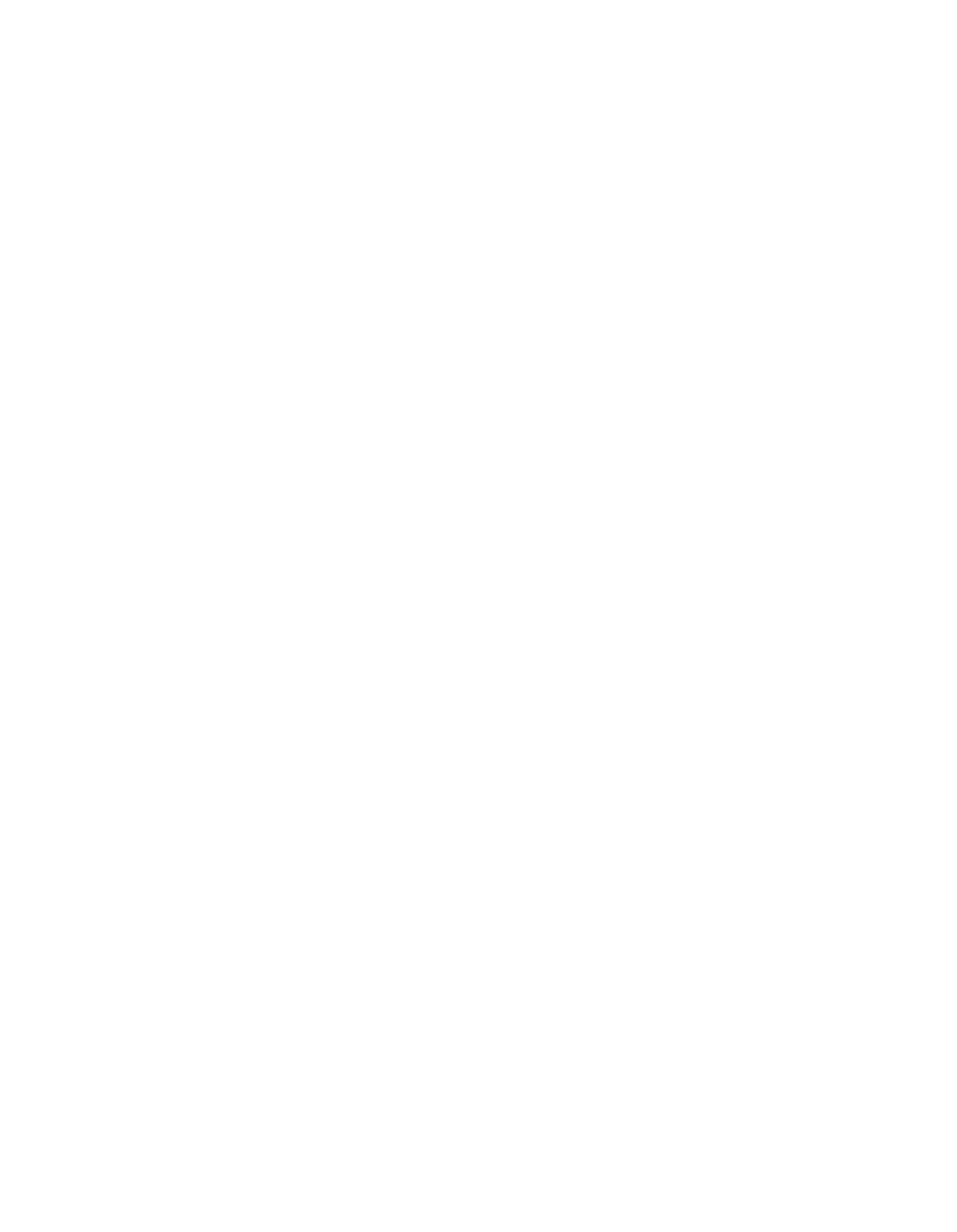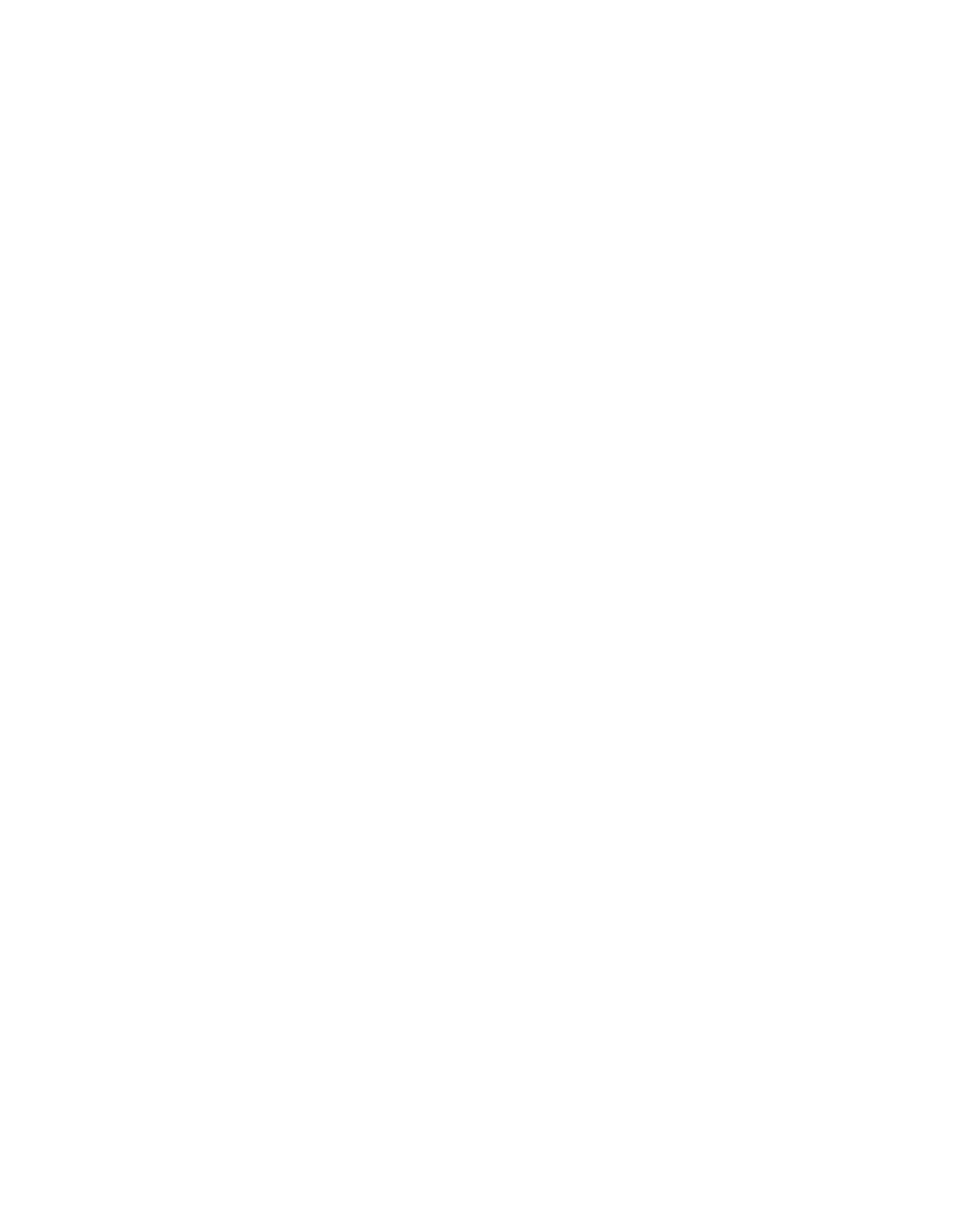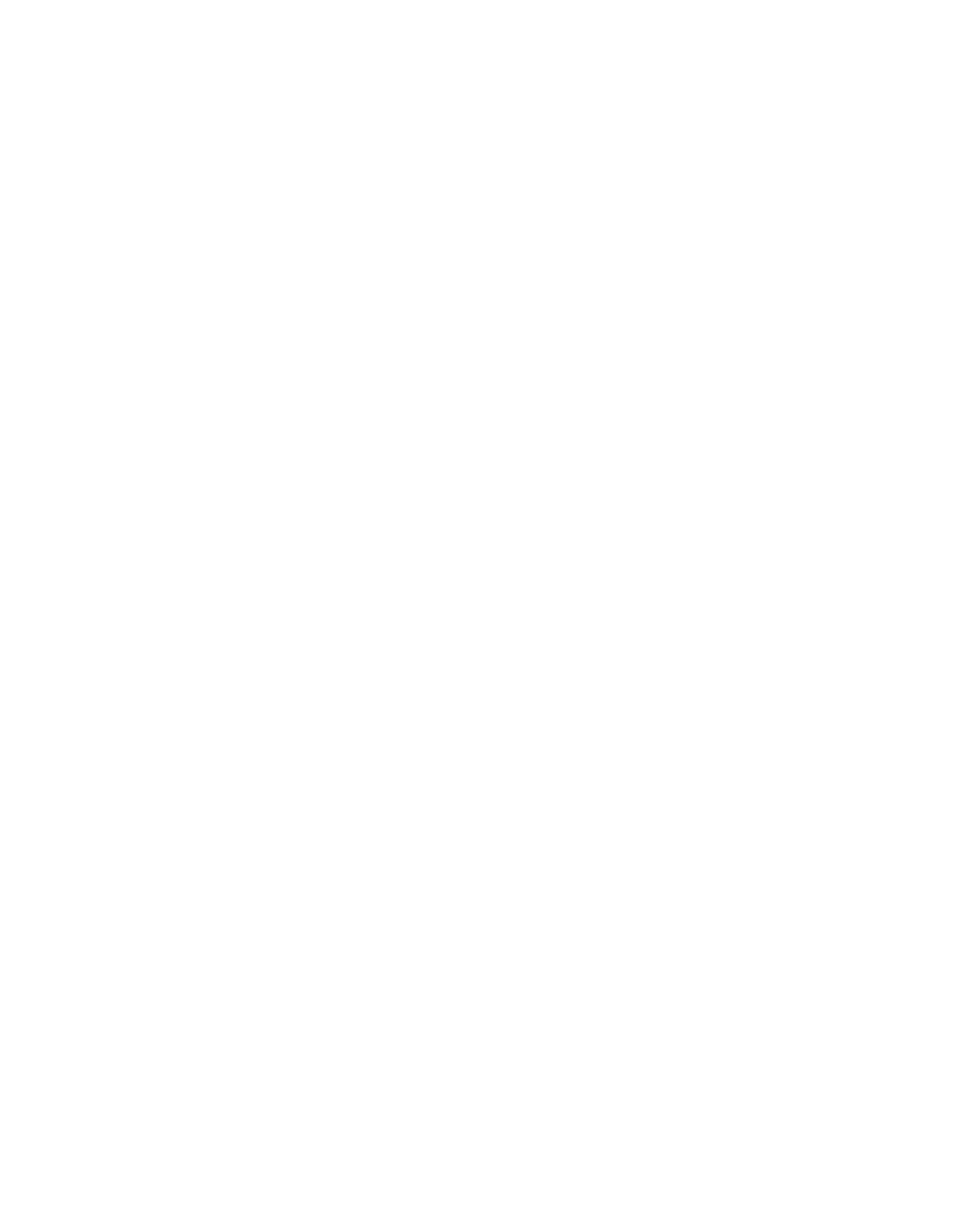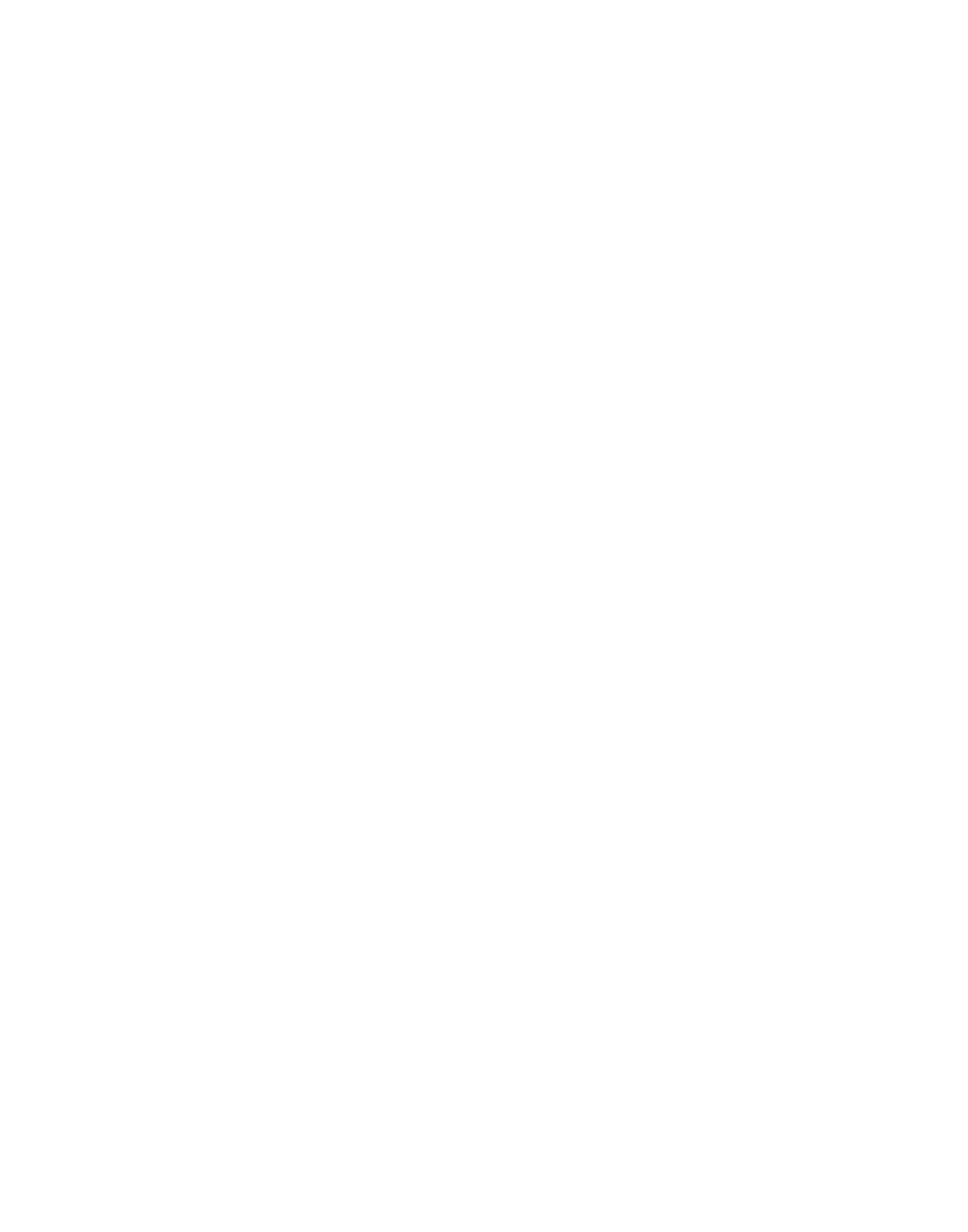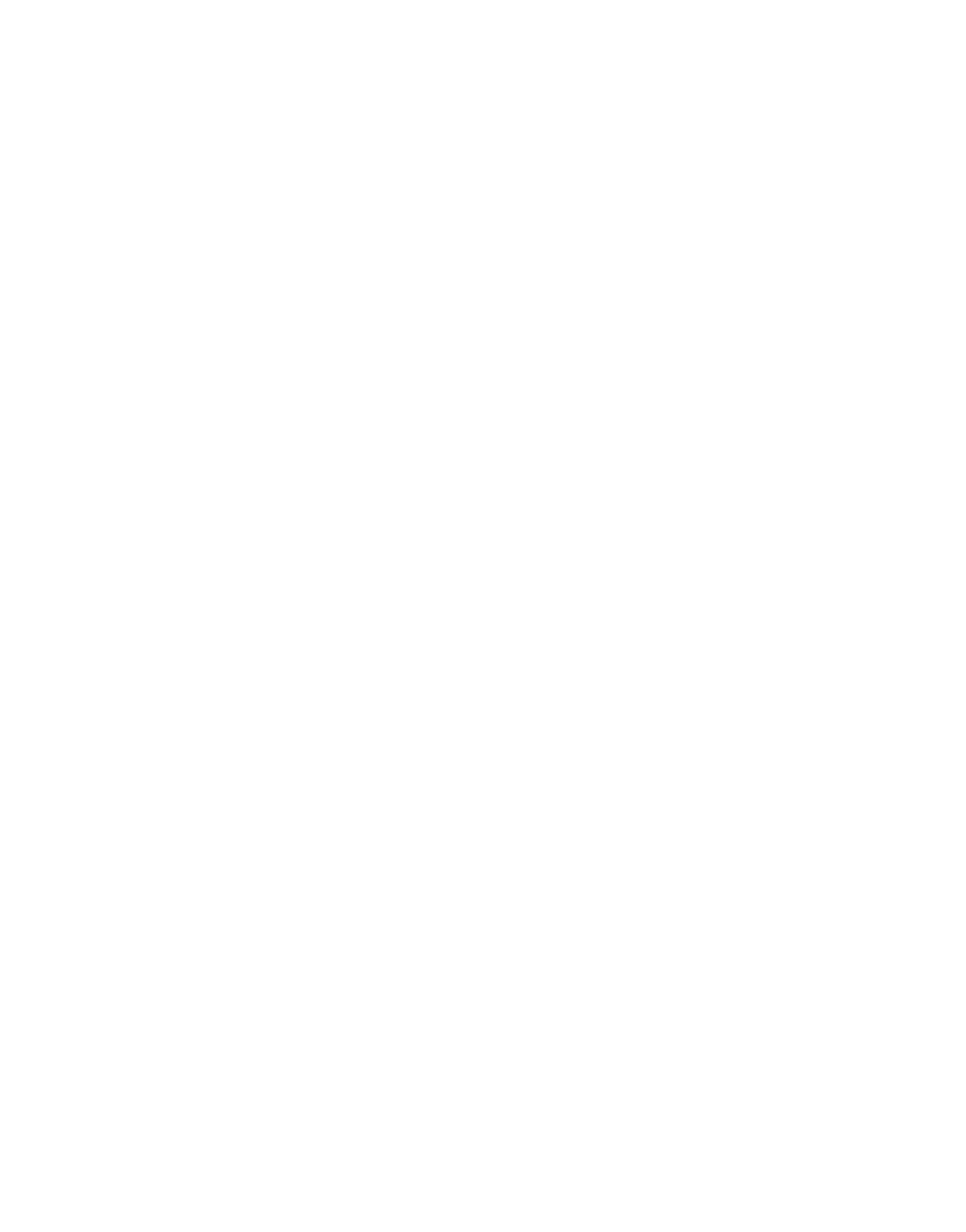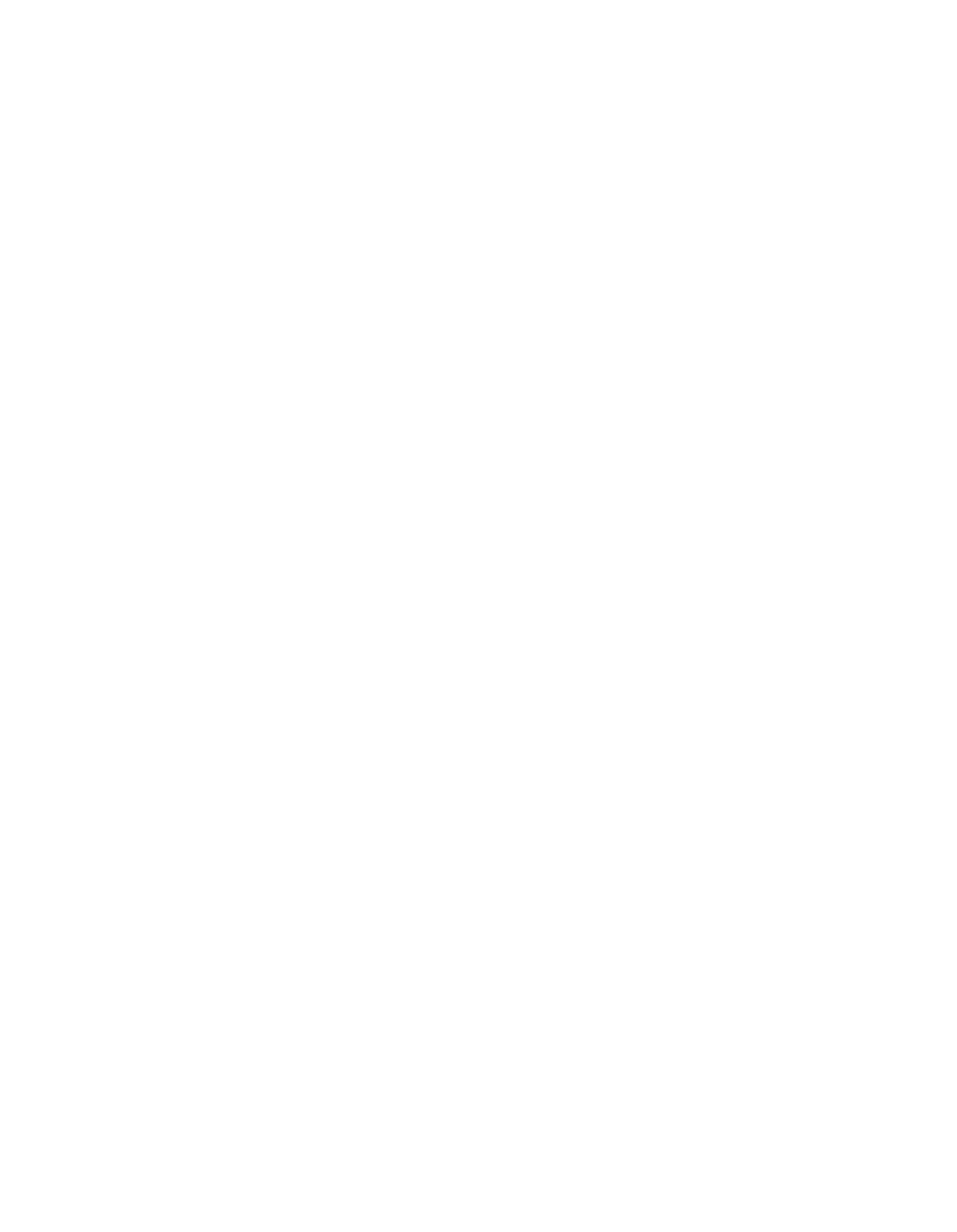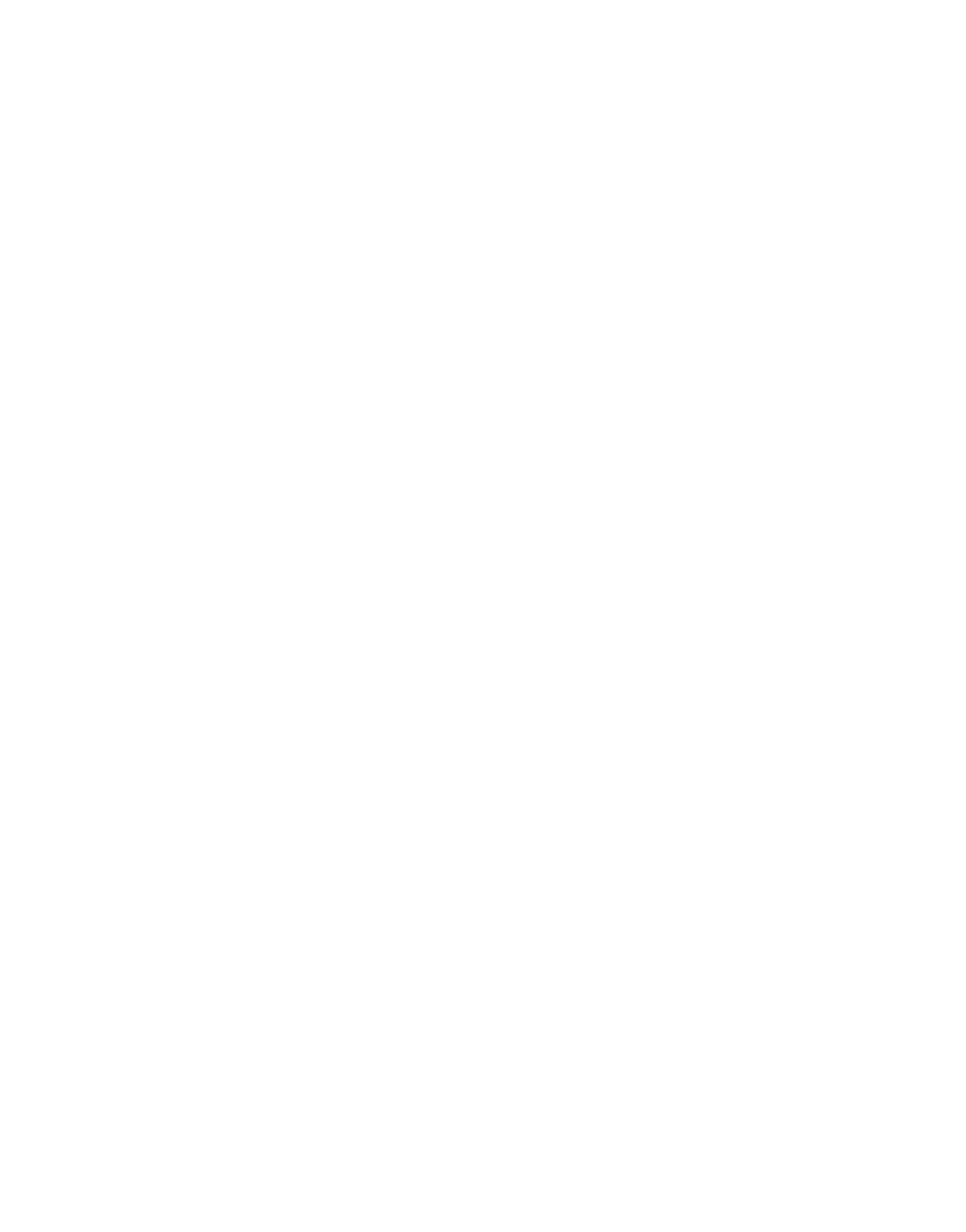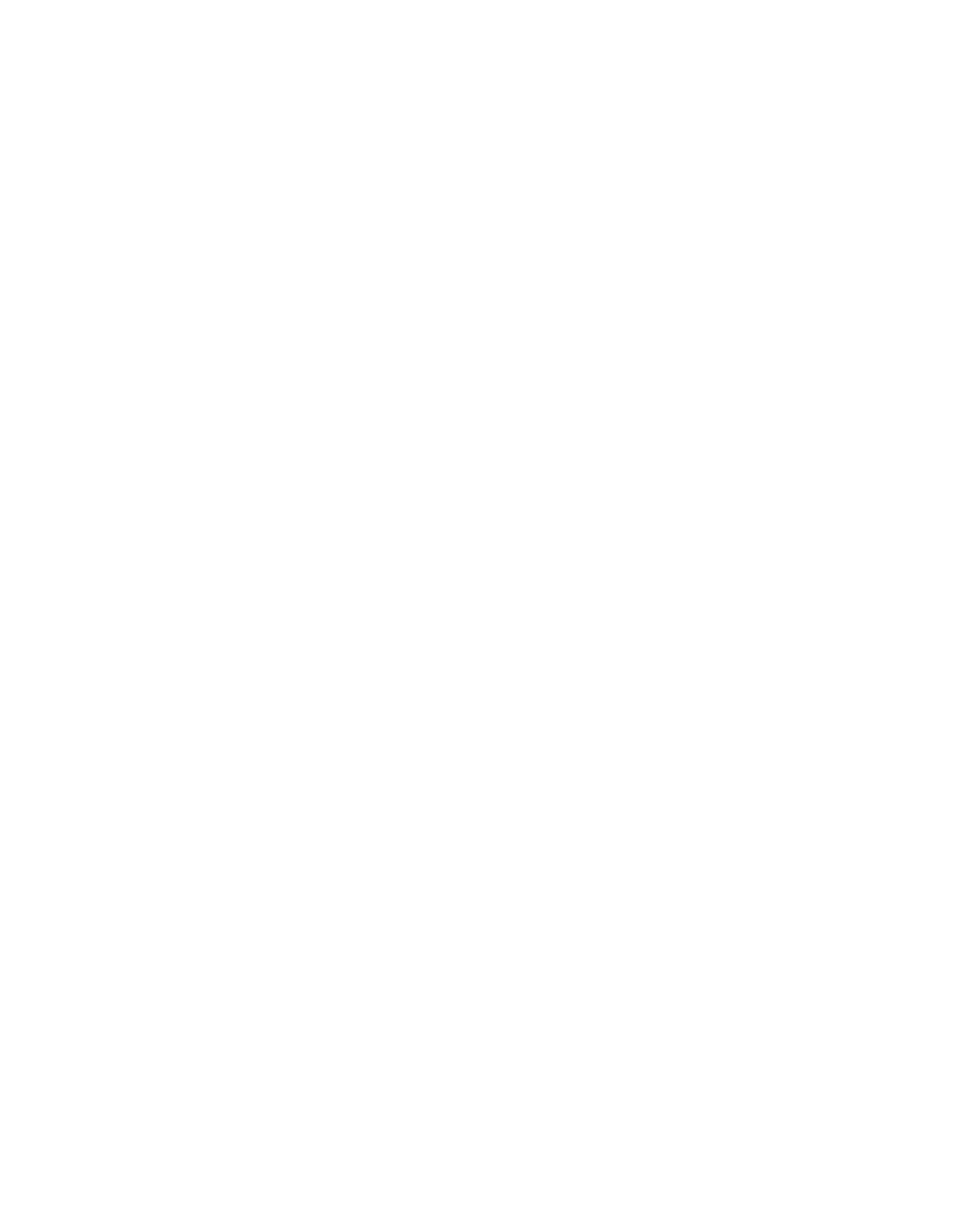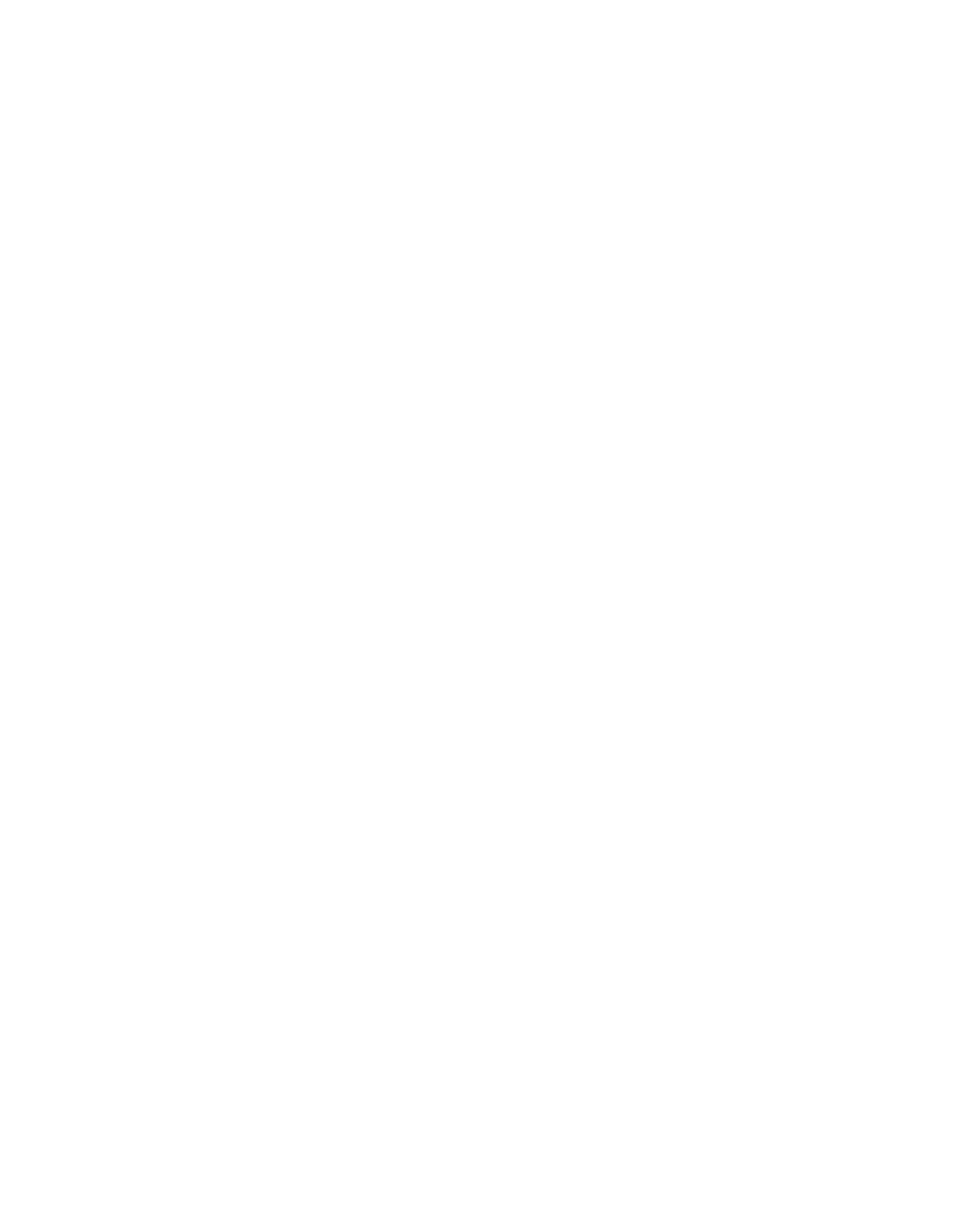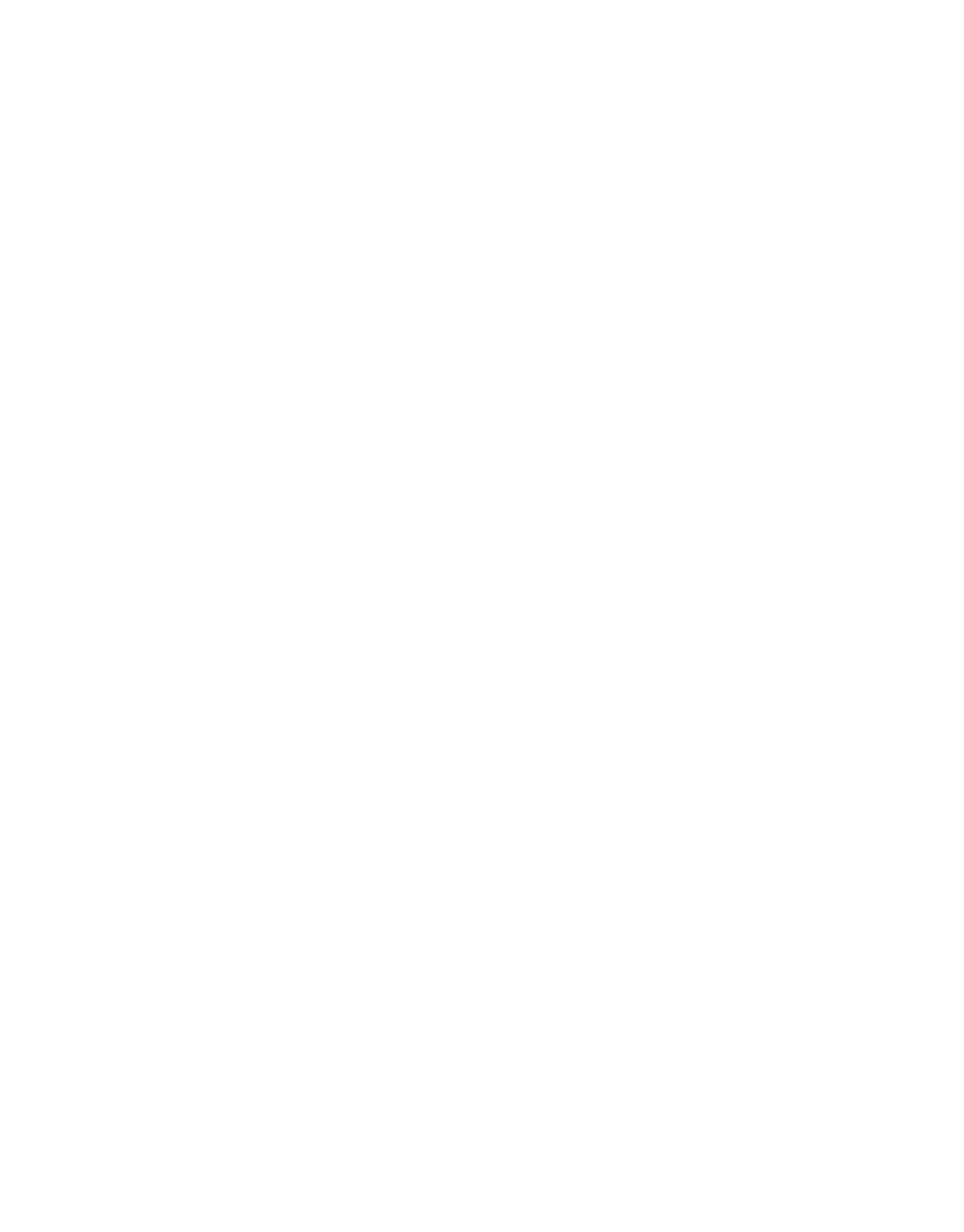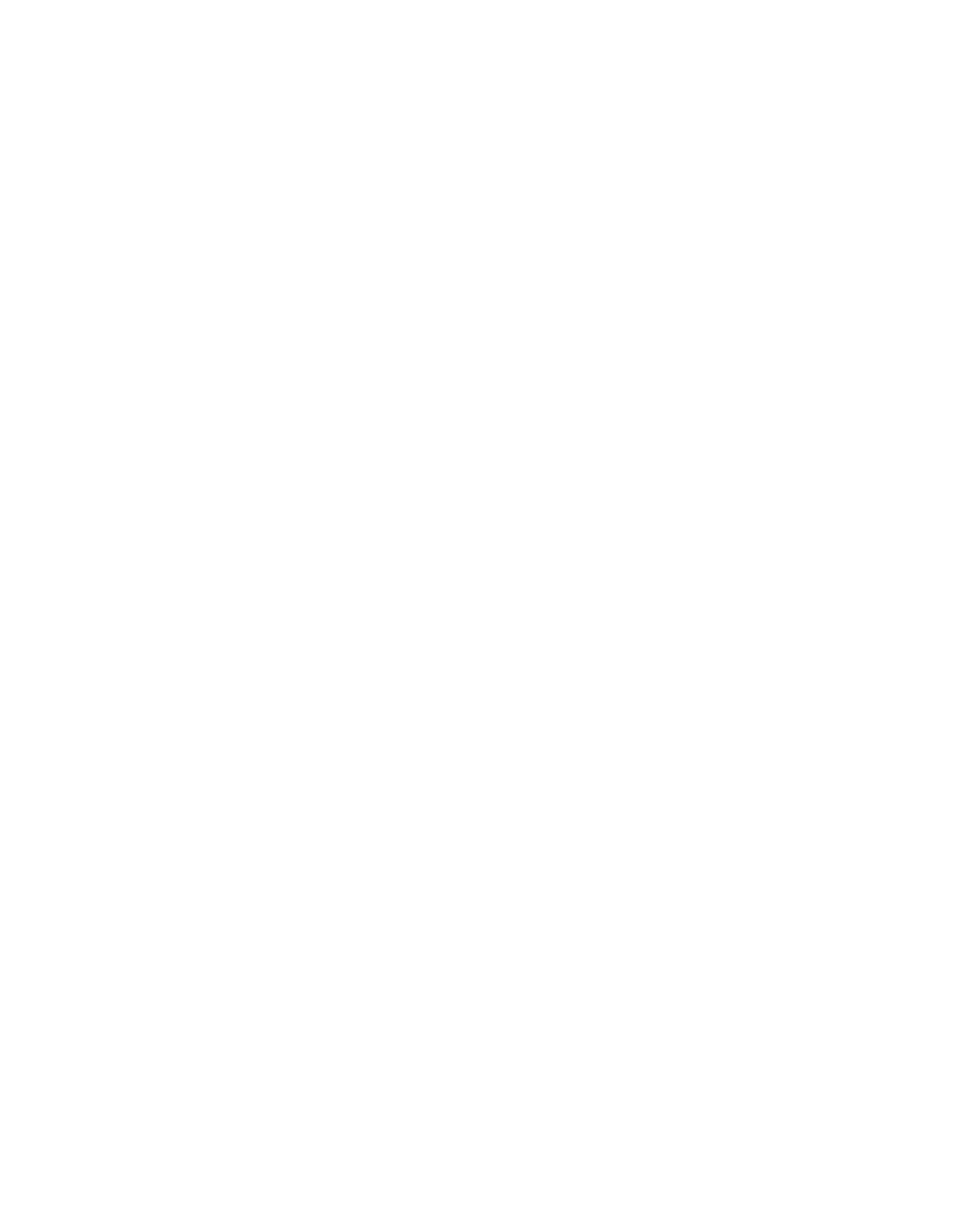ILLIN~I~POLLUTION CONTROL BOARD
August 30, 1982
IN
THE MATTER OF:
)
SULFUR DIOXIDE EMISSION
R80—22
LIMITATIONS:
RULE 204
OF
CHAPTER 2
)
Proposed Opinion.
First Notice.
OPINION OF THE BOARD
(by
I
G~Goodman):
This Opinion supports the Board Order of August
188
1982 in
this matter.
On December
1,
1980 the Board received the Illinois
Environmental Protection Agency’s
(Agency)
proposal to adopt
emission limitations for sulfur dioxide from fuel combustion
emission sources located within the three Major Metropolitan
Areas
(MMA)
of
St. Louis,
Peoria, and Chicago,
Also proposed
was a reduction in the emission limitations for process emission
sources located in the
St.,
Louis and Chicago MMAs,
The Agency
filed its proposal
in R77-l5 and R78—14, two ongoing regulatory
proceedings which had been consolidated for hearings.
R77-15 was
a site-specific rulemaking proposed by Ashland Chemical Company
(now Sherex Chemical Company,
Inc.) to amend Rule 204(c)(1)(A) of
the Board’s Chapter
2:
Air Pollution and finalized by Board Order
on December 17,
1981.
R78—l4 was an inquiry concerning Rule
204(c)(l)(A)
instituted by the Board and dismissed on January
8,
1981.
The Agency’s proposal was primarily a response to the
legislative mandate that it review the sulfur dioxide emission
limits for existing fuel combustion emission sources located
within these three MMAs and thereafter propose amendments con-
sistent with the Clean Air Act~sNational Ambient Air Quality
Standards program, which would enhance the use of Illinois coal.
(Ille
Rev. Stat,
1981,
ch,
111½, par.
1009.2).
On December 19,
1980
the Board docketed the Agency’s proposal to amend Rules
204(c)(l)(A),
204(d),
204(f),
204(h) and 204(i) of Chapter 2
as R80—22.
The Agency submitted revisions to the R80~-22proposal on
February 26,
1981, January 25,
1982 and June
1,
1982.
Public
merit hearings were held in East St.
Louis,
Peoria,
and Chicago
on February 26,
March 10 and
12,
1981,
respectively, and again
on June
1,
1982 in Chicago.
The Department of Energy and Natural
Resources
(ENR)
submitted the Economic Impact Study of the pro-
posed sulfur dioxide amendments, ENR Document No, 82/11, on
April
26,
1982.
Economic impact hearings were held in Chicago
and Peoria on June
1 and
22,
1982,
respectively.
The record was kept open for public comments until July
14,
1982.
The Village of Winnetka (Winnetka)
requested an extension
on July 12,
1982.
That motion is granted and the comments filed
48-37
by
Winnetka
on
3u1~ 30,
:~:~i,
arc.
~0
A~rtt~
p~iL1ic comment
period
for
fortv~i9e
da~’o
~
ri:~o
~ ~n
th~ r~iLc~s
proposed
by
the
Board
are
pub~
sh~~d
:~n ~r~’
~
‘~t
~iecr~st
~r
~or
First
Notice.
Emission
1_~r~
:c~on~
::o~
~
~t;~’
e~ir~u~ sources
were
among
the
first
air
reg~ a~
prc~u~qato2
~y
:he
Board
in
1972
Since
then
the
rule~ tor
tuel
o~rrbu~
tion
erniss±on ~curces
have
been
contested
&nd
are
C~5li
now
remanded
to
the
BoarcL,
Yet
in
these
ten
years
the
original
national
ambient
air
guL~t:itystan-
dards
for
sulfur
Yioxith~ have
renamed
sub~tantia1
~y
unchanged;
the
primary
annuel
st~o3~r~
has
osen
attained
statewIde
in
Illinois;
the
control
teebuologres
originally
considered
have
proven
feasib1e~
~snd
n~rnlisnc
with
the
orrqinal
Board
enission
limits
widely
ach~evud
~3h~onr~~
ooncern~
impacting
control
of
sulfur
dioxide
ha~’edeveloped
o~er
the
ten
year
span
The
need
to
utilize
more
dr~es~ri~.
tu~
has
become
apparent
for
a
healthy
economy.
This
realization
Ic
~spec~.ally
important
considering
Illinois’
reserves
of
h~rt
c;u~.ic: coal,
However~ it
is
also
probable
that
further
te
i~hion~
:~nsulfur
dioxide
emissions
are
necessary
for
a
health’i
enviionment.
~~ognizant
of
these
conflicting
deve1opments~
it
is
the
Board’s
intent
to
reconcile
them
as
much
as
:possih!s
in
e$tabiish:Lng
sulfur
dioxide
emission
limits
to
replace
those
voided
h’~ the
Courts~
These
limits
should
also
provide
for
the
atto:Lnment
and
maintenance
of
the
air
quality
in
Illinois
for sulfur nioxicie,
he noted, the history of
the
Board’s
regulations for sulfur dIoxIde is lengthy.
Therefore,
a
brief
summary
precedes the analysis of the rules~
As
stated
before~the emission limitations
for sulfur
dioxide
produced
by
solid
fuel
cOrnbust~on and
process
emission
sources
were
among
the
first
a:r
poduticri
rc~u1ations
promulgated
by
the
Board,
including those for the ~
Louis,
Peoria
and
Chicago
MMA.
In
the
Matter
of Eetheion Standards,
4
PCB 298 April
13,
1972.
~
~,
asa~
~
ided~uturecompliance dates for
both types
of emission sources
Kay, 1975 for solid fuel combus-
tion sources and December,
1973 for the process emission
sources.
In so doing, the Board acknowledged that the control technologies
envisioned by these lirüts were only then rapidly developing.
For
this reason and because c;ompl:Lance alternatives
included
switching
from high sulfur cea)
to limited reserves of low sulfur coal, oil,
or gas,
these emission limits were not uniform statewide, but in-
stead geographic and source determinative.
it should be noted that
Rule 202:
Visual Emissions and Rule 203~ Particulate Emissions
were adopted concurrently with Rule 204~ Sulfur Limitations.
The
adoption
of
Rules 203(g)(1),
204(a)(1)
and. 204(c)(l)(A)
was successfully appealed at the appellate and supreme court
level.
Commonwealth Edison Com~air v,
Pollution Control Board,
25 Ill.
~d
(Is
t~5T~t~T~flT
~I..
d 494,
48~38
3
343
N.E.2d 959
(1976),
These specific rules pert~lnedto the
particulate and sulfur dioxide emissions for sources
located
within the three
largest DMA.
In its rema~d,
the appellate court
instructed the Board “either to validate these
rules
in
accordance
with Sect~or 77 of
the Act or to prepare proper rules
as
substitutes.~1
I
at
96,
In affirmirg the Appellate Court,
the Supreme Court irtro(uced the notion that the Board’s record
was
insufficient as t
~hether simultaneous comp~ancewith Rules
203
and
204 was techn’cally feasible and economically reasonable,
The higher Court’s dec”is~onalso cited. the fact that “a weight of
new
evidence” had become irailable, presumab y a reference
to the
Board’s
inquiry hearirge into sulfur dioxide rules
(d74—2)
and
the Agency’s proposa~ f
r seltur dioxide rules
t75~~~5),
and like
the appellate deci~no
dire’~’tedthat the contested rules be
validated or appron late n~wrules adopted.
Thereafter the
ard
oisolidated the r cords in R7l—23,
R74~~2
and R75~~5
arid ie)d
wo add~tiona?public ~earings.
It
should be noted that
J v
rrlor to the Supreme Cour
‘s decision
the Environmental Pro ‘~‘cti~nAct was amended to require
I)
economic impact stulIe~
EelS) and hearings in future rulemakings
and 2) adoption of rec’ul&’ tons by the Board prescribing conditions
for sulfur emissior
~c r-~cto ccc intermittent control systems
(ICS).
The Supreme Co r~
decision acknowledgt.d the ICS
amendment,
but was silent on th
B IS amendment,
Consideration of ICS was
deferred until
final rulemaking in R74~2and R75~~’5to avoid intro-
ducing a new rulemaking
n the validation process.
No economic
impact statement w~ Irspated or hearings held.
An abstract of
the consolidated r~cii
i~lito ‘wealth of inforsation” was pre~
pared
by
Marder
Ass c ates
On July
7,
1977 the Board validated
the remanded rule~ atE
reviewing the pertinent information in
the record and corsidering tre issues identified by the Courts,
27 PCB 57,
Therein ~.heBoard decided that an economic impact
study was riot necessary for validation, and relied instead. on
the economic evideree a3ready in the record,
Furthermore, the
opinion stated that the
Matder report” served only as an aid,
and
riot an analysie of the merits of the information.
Neverthe~~~
less, the validation of the rules was vacated.
Ashland_Chemical
v,
Pollution (‘ontro~ Board,
64
Ill, App.
3d
169,
381 N.E.
2d 56
(3d Diet.
1978
and Illinois State Chamber v, Pollution
Control Board,
6’ 111.
hpp,
3d 839,
384 N.E.2d 922
(1st Dist.
1978),
Both courts declired ruling on the substantive validity
of the R71~23regulations and instead voided the Board’s validation
on procedural grounds
Miong other things, both Courts found
that
the Board’s use of the Marder report without public hearings on
the same violated due rr~cessrights and that Section
6 of the
Act, requiring an ecoromic impact study and accompanying public
hearings had not been complied with,
Validatior
havirg failed, the Board instituted inquiry pro-
ceedings into the remanded sulfur
dioxide
rules
(R78~l4)and the
particulate rule (R78~16),
On December
14,
1978, these regulatory
48~39
4
proceedings
were
consolidated with
R77~l5
(the
Ashland site-
specific proposal) and
R78~~’15(Rochelle site’-”specific proposal)
for hearing purposes.
Final action on R77~l5was taken on
December
17,
1982
and is still
pending on
R78-~l5,
On February 15,
1979, the issues
outstanding
from
the
combined
hearing
record
in
R71—23,
R74—2,
and R75~5were
resolved.
Sulfur
dioxide
emission
limits for rural
fuel combustion
sources including an adjudicatory
procedure and formula for site—specific limits were adopted in
the consolidated
order for R74—2
and R75—5.
ICS rules were not
adopted having been subsequently barred by amendment to the Clean
Air Act as a dispersion enhancement technique.
As stated above,
the Agency’s proposal for emission limits in the MMAs was
separately docketed
as R80—22,
R78—14
(sulfur dioxide inquiry)
was shortly thereafter dismissed,
R78-l6
(particulate rule inquiry)
was also dismissed.
with leave
to reopen should simultaneous com-
pliance with the
particulate
and sulfur dioxide emission limita--
tions become an
issue in R80~22.
It should be noted that R82-l,
another Board proceeding concerning Rule 203(g)(1),
has been
instituted, with
further action dependent on submittal of the
economic impact
study.
Therefore,
resolution of the
issues
involved in this
rulemaking
(R80—22) will hopefully conclude
the entangled regulatory history of sulfur dioxide since the
Commonwealth Edison
appeal.
ANALYSIS OF THE REGULATIONS
Fuel Combustion
Emission Sources
The
limit
for
sulfur
dioxide
emissions
for
existing
sources
in
the
three
MMAs
was
originally
adopted
at
1.8 pounds per mil-
lion
British
thermal
units
(lb/mBtu),
4
PCB
298.
Compliance
with this and the other limitations concurrently adopted antici-
pated that air quality
statewide
would
be
better than that
established by levels
the
national sulfur dioxide standards in
1971.
The National Ambient Air Quality Standard
(NAAQS)
for
sulfur dioxide includes two p~imarystandards:
an annual
standard ~f 0,03 ppm
(80 ug/m
)
and a 24 hour standard of 0,14 ppm
(365 ug/m ~
and a secondary standard based on
3 hours of 0.5 ppm
(1300 ug/m
).
Since
1975 no violations of the annual primary
standard have been recorded in any of the three MMAs.
The short-
term primary standard has been violated in all three MMAs, but
not since
1977 in Chicago and Peoria,
Violations of the secondary
standard have occurred in East St.
Louis and Peoria.
Monitoring alone can neither provide a plan to achieve air
quality in the St. Louis MMA, nor can
it determine the extent
the limit may be relaxed and the NAAQS
in the other two MMAs
still maintained.
Forecasting of this type must be developed
through
air
quality
analysis.
Therefore,
regional
air
quality
analyses, including base
and
strategy analyses, were prepared
for each of the three MMAs.
The modeling format used for each
48-40
5
of the three MMAs was basically the same, as were the data re-
quirements.
The data information, on the other hand, were geogra-
phically specific.
Each base analysis involved the Rural Area
Model
(RAM), which was modified to provide modeling for both
urban and rural sources.
The RAM was further modified to conform
with a second model, the CRSTER, which was used to account for
isolated emission sources.
It should be noted that modeling
is intended to demonstrate
that even under the worst meteorological and maximum emission
situation, violations of the NAAQS do not occur.
Exept
for the
St. Louis MMA, modeling was done only to evaluate the short-term
standards,
i.e., the
24 hour and 3 hour standards.
This was con-
sidered sufficient since attainment of the annual had already been
demonstrated, and the short-term standards are considered more
stringent than the primary annual standard.
The emission inventories contained the location, magnitude,
frequency, duration and relative constributions of the fuel com-
bustion emission sources in
each
area.
Generally, only point
sources emitting more than 100 tons of sulfur dioxide per year
(T/yr) were included, and area sources were accounted for in the
background levels.
The point sources were identified in the
Agency’s total air system (mS), which was compiled initially in
1974 and has since been continuously updated.
In calculating
the sources’ impacts on the model’s receptors, all sources were
assumed to operate at their maximum allowable rate, based on
the
remanded emission limits.
The air quality data consists of the monitored values.
Sulfur dioxide monitors operate continuously and the data
gathered is averaged to obtain hourly values.
Each study had
a different number of monitors involved and
a different base year.
The monitoring date was used to develop the background levels
for each area studied, by matching it with the meteorological
data for the same base year.
Exclusion angles were uniformly
calculated to eliminate “downwind” sources from the background
totals.
Emission Limits
St.
Louis MMA
An annual analysis was performed for the East St. Louis area
using the Climatological Dispersion Model
(CDM).
The meteor-
ological data consisted of data collected between 1975 and 1978 at
Lambert Field and the National Climatic Center, and upper air
observations were obtained from the National Weather Service
at Salem, Illinois.
Even after growth was considered,
no viola-
tions of the annual sulfur dioxide standard were predicted.
However, violations of the secondary standard were predicted.
48-41
6
Like the
other
two
$U4As, an analysis of the short—term
standards was programmed.
The meteorological data for 1973-1977
was gathered from the same sources used for the annual analysis.
The RAM was used in those areas which are basically urban
in
nature, and a modified version used for the rural
areas.
The
CRSTER model, which does not have the capability- to model several
sources at separate locations, was used for the isolated power
plant,
Illinois Power Baldwin.
The maximum allowable emission
rates of all major sources in Madison,
St.
C.air,
and Monroe
Counties was used in the model.
The sulfur dioxide sources for
Missouri were not used because the maximum allowable emission
rates and stack parameters were not available for these sources.
These emissions were, however, reflected
in the background
determination.
Emissions due to growth were not explicitly
modeled in this analysis.
It was instead assumed that any
additional emissions would be minor, and readily absorbed since
the model was already conservative in that all existing sources
operate at maximum allowable rates.
Furthermore, any new major
sources would be required to show no significant impact on air
quality pursuant to the Prevention of Significant Deterioration
(PSD)
or New Source Review
(NSR) programs.
The short—term modeling predicted widespread violations of
the primary 24 hour standard and the secondary
3 hour standard
primarily in the industrial areas of East St. Louis
(Ex.
3,
pp.
85-86).
Consequently, a culpability assessment was made,
using the “worst case” days of the five year period modeled.
The results, which included background concentrations, and
Illinois urban and rural sources of sulfur dioxide,
found the
sources in the Alton Wood River Area to be varied; whereas in
East St. Louis and Granite City,
the elevated sulfur dioxide
levels were more localized and source—oriented.
The two sources
identified, however, were process sources as opposed to fuel com-
bustion sources.
Due to the number of violations predicted,
no relaxation of
the emission limitation for fuel combustion sources
in the St.
Louis MMA is proposed.
Sulfur dioxide emission limits are
predicted to increase from fuel combustion sources in the next
decade
—-
but from residential and commercial sources
--
and
remain constant from industrial sources.
In an effort to achieve
attainment in this MMA, more stringent limitations for process
sources were proposed by the Agency.
These wil.
be discussed
later in this Opinion.
Peoria Major Metropolitan Area
Neither the modeling done in 1978 nor recent monitoring
indicates violations of the annual standards in the Peoria MMA.
Thus, only short—term analyses were considered, on the assumption
that short-term standards are more restrictive than the annual
48-42
7
standards
and,
therefore,
any
subsequent relaxation could
not
jeopardize the annual attainment status.
A five year base
analysis,
using
the
RAM and CRSTER model, was developed to
determine if the
1.8
lb/mBtu
limitation could be relaxed,
Five
years
(1973—1977) of meteorological data from the Peoria
National Weather Service Station was used in the analysis.
Again, maximum allowable emissions based on the 1.8 lb/mBtu
standard
were
used
along with appropriate background concentra-
tions.
The results of the base analysis predicted violations
of the
primary
24 hour standard, which were isolated to two
small
areas,
and none for the secondary
3 hour standard
(Ex,
3,
pp.
25—26).
A culpability analysis was also developed, using the two
receptors which had indicated violations
in the short—term base
analysis.
The culpability analysis associated these violations
with sources located at the Caterpillar Mossville Plant and
Caterpillar East Peoria Plant.
Both of these Caterpillar plants
are already equipped with flue gas desulfurization equipment
(FGD).
Therefore,
if the actual emissions were used in the base analysis,
it can be assumed that violations of the primary standard would
not be predicted.
For this reason,
Rule 204(c)(5)(C)
is proposed.
The specific emission limitations set out therein reflect the
actual emissions for three sources at these two Caterpillar
facilities,
With these limitations in place and enforceable,
the base analysis would no longer indicate violations of any
standards,
so relaxation of the 1.8 lb/mBtu limit can be con-
sidered for some of the area’s remaining existing sources,
Two strategy analyses were conducted by the Agency to
determine the extent relaxation possible without creating vio-
lations of the NAAQS,
The first strategy analysis focused on
the violations predicted for the two Caterpillar plants as dis-
cussed above..
It considered the effects, of the FGDs,
The second
strategy analysis utilized an MPTER model,
The MPTER is a disper-
sion model which can simulate the disper~1ionof several sources’
pollutants in a moderate terrain.
Applyin~a data base consisting
of the relaxed emission inventory,
a modified receptor network,
and five years of meterological data, the modeled impacts for all
urban and rural sources, and background concentrations to the MPTER,
air quality based on a 5.5 lb/mBtu emission limit was determined.
Violations of the short—term standards were predicted.
Therefore,
a second culpability analysis was performed.
Caterpillar’s Mapleton
Plant, despite an emission limit of 1.8 lb/mBtu,
and the Sherex
Chemical Company were identified as the sources of violation.
Based on this analysis,
the following conclusions were made:
(1)
The cause of Caterpillar Mapleton and Sherex’s pre-
dicted violations were the Mapleton bluffs;
48-43
8
(2)
the emission limits of 1.0 lb/mBtu for the Caterpillar
East Peoria
Plant
and
1.6
lb/mBtu
for
the
Caterpillar
Mossville plant would be sufficient to maintain NAAQS;
(3)
Sherex~semission limit could be relaxed from 1.8
lb/mBtu to 3.3 lb/mBtu without jeopardizing the NAAQS;
and
(4)
with the exceptions of the Caterpillar and Sherex
facilities,
the
emission
limit
could
be
relaxed
from
1.8
lb/mBtu to
5,5
lb/mBtu for
industrial boilers with
a
generating
capacity
of
less
than
250
mBtu.
It should be noted
that
only
one
industrial
facility
with
a generating capacity of greater than 250 mBtu remained subject
to the 1.8
lb/mBtu limitation
——
CPC
International
(now Pekin
Energy,
Inc.).
During the
merit segment of
the June
1,
1982 hearing,
a
third strategy analysis
was
presented.
The emissions inventory
for the modeling
was
revised to include the Caterpillar plants
emitting at their
actual limit of
1.8 lb/mBtu,
small industrial
boilers (less
than 250 mBtu) emitting
at 5.5
1.b/mBtu, and CPC
International boiler
(rated
at 330 mBtu) assessed at 5.5 lb/mBtu.
The Sherex boiler
was
modeled at an assumed stack height of 200
feet, which would allow Sherex to
emit
up to 5.5 lb/mBtu without
causing NAAQS
violations
due to the Mapleton bluffs.
This
analysis
indicated
that emission limits for the Caterpillar
Mapleton and East
Peoria
facilities must be further reduced to
assure compliance
with the
NAAQS,
An emission
limit of 0.8
lb/mBtu at
the
Mapleton facility and
1.1 lb/mBtu at the
East
Peoria facility
would eliminate any possibility of
violation.
Chicago Major
Metropolitan Area
The
air quality analyses for
the
Chicago
MMA were prepared
in 1981 and
presented at the
June 1st merit hearing
(Ex.
11).
The base analysis
utilized
the
RAM
model for those areas iden-
tified as urban,
the MPTER model for
those
areas identified as
rural, and
the CRSTER model was later used to
demonstrate the air
quality near
two isolated
areas.
The meteorological data for the
models was provided
by
the Chicago Midway National Weather Service
and the Peoria
National
Weather
Service
provided the upper air
soundings.
The
meteorological
effects due to Lake Michigan were
not considered
since
(1)
no meteorological sites continuously
operate near the
Lake, and
(2)
no readily available dispersion
modeling is available to take the Lake effects into account.
The emission
inventory
included point sources considered to have
significant
impacts, that
is greater than 100 T/year,
located in
Cook, Lake, Will, McRenry, Kane and DuPage Counties.
The maximum
allowable emission
rate
was used throughout;
this way the possible
48-44
9
violations of the NAAQS could be identified, with the additional
benefit that growth need not be specifically considered.
Unlike the analyses for the other two MMAs,
the background
areas to be included in the Chicago study had to be limited
because of the size and complexity of the geographic locale.
Four areas were identified as needing background value determination:
Will County, Lake County, southern Cook County and northern Cook
County.
In estimating these background levels, actual data
gathered at nine continuous sulfur dioxide monitors, as recorded
in 1976 and 1977, was coupled with the hourly meteorological
data for 1976 and 1977.
Downwind sources were discounted through
the use of “exclusion ang1es~”
The base analysis identified violations
of both short—term
standards,
For the 24 hour standard, four were predicted
in
Cook County, and one in Will County.
For the
3 hour standard,
three violations were predicted in Will County.
The Chicago MMA culpability analysis predicted throughout
the Chicago area exceed the 24 hour and the
3
hour
standards.
In Cook
County
ten
sources were identified as significantly con-
tributing for five days studied in
1975.
One source was identi-
fied in Will County, which has been mothballed; therefore,
its
actual emissions have been eliminated.
Similarly, the ten sources
identified may not actually he contributing emissions near the
maximum
allowable emission limits
used
in
the
model,
Therefore,
rather than making
a blanket determination that relaxation is not
permissible
in these areas,
it should be realized that individually
these sources may be able to prove that increased emission
rates
may not jeopardize the NAAQS in the
surrounding
vicinity.
In addition to the base and culpability analyses,
four
strategy analyses were conducted to determine which sources could
be
granted
relaxed emission limits,
Two of the four analyses were
site-specific, and two looked initially to the geographic areas
to determine if any sources located therein
could
profit
from
relaxed limitations.
The first strategy evaluated the emission sources in Kankakee
and McRenry Counties to determine if the limitation could be
relaxed from 1.8 lb/mBtu to 6,8 lb/mBtu without jeopardizing the
attainment
status.
Each county has one coal burning facility and
one oil and/or gas burning facility which is unaffected by any
relaxation.
Nevertheless, these facilities had to be included
in the modeling since they each contribute more than two—thirds
of the total sulfur dioxide emissions per year in their respective
county.
The CRSTER model indicated that the
coal
burning sources
could emit up to 6.8 lbs/mBtu without jeopardizing the air quality
in these attainment areas,
The Shapiro facility in Kankakee County
was
individually
48-45
to
modeled.
tt
had not been
included in the Kankakee study since
its
boilers are
equipped
to operate on natural
gas
•
It does
have a single
coal-fired
boiler which, if utilized
with
the
relaxed emission limit of 6.8 lb/matu, would not adversely impact
air quality in Kankakee.
Furthermore, should Shapiro decide to
switch
to
Illinois
coal,
results
of
the
CRSTER
model
indicate
that
the
other
coal-fired
facility
in
Kankakee
would
not
be
affected,
and
the
attainment
status
would
not
be
jeopardized.
The
second
geographic
area
considered
was
the
areas
of
the
Chicago
Milk
which
were
outside
the
non-attainment
areas.
Only
five
sources,
which
are
currently
burning
non-Illinois
coal,
were
modeled
as
potential
condidates
for
a
relaxed
emission
limit
of
5.5
lbs/mBtu.
These
emission
sources,
meteorological
data
from
1973
(the
worst
case’
year),
and
previously
identified
receptor
locations
were
input
into
the
RAM
(urban)
and
MPTSR
model
•
Back-
ground
data
for
Lake,
Will
and
Cook
Counties
were
also
processed.
Only
two
sources
were
identified
as
not
causing
violations
of
the
short-term
standards
if
allowed
to
emit
up
to
5.5
lbs/matu.
However,
as
was
the
case
for
two
sources
in
the
Peoria
Milk,
modeling
to
determine
possible
terrain
and
downwash
problems
is
necessary
before
a
relaxation
could
be
granted
to
these
sources.
They
therefore
are
potential
candidates
for
the
site-
specific
adjudicatory
procedure
also
proposed
in
this
rulemaking.
Lastly,
the
Caterpillar
facility
in
Kendall
County
was
modeled
to
determine if
the
emission
limitation
could
be
relaxed
to
6.8
lbs/mBtu.
Kendall
County
is
currently
an
attainment
area
for sulfur dioxide.
Should the e’aission limit
be
relaxed,
however,
the
CRSTER
model
predicts significant
violations
of
the
short—term
standards,
but
no violation of the
annual
primary
standard.
Relaxation
is
denied
at
this
time
because
the
CRSTER
model
did
not take
into
account
background
levels,
terrain,
or
building
downwash effects.
The
overall
effect
of
the
relaxations
proposed
is
that
an
additional 220,000 tons of Illinois coal
can
be burned annually in
addition to the 120,000 tons burned annually by Sherex,
Bernie
and
Celotex
pursuant to R77-l5.
Conversions by sources in the Peoria
Milk
and
Kankakee
and
Mcflenry
Counties
from
oil
or
natural
gas
will
also
increase
Illinois
coal
usage.
At this
time,
however,
the
amount
is not certain (R.648)
•
The
increased
usage
of high—sulfur
coal
has
been
adequately
demonstrated,
primarily
on
a
source—by-
source
basis,
not
to jeopardize current air quality.
In
addition
to
the
specific
limitations
adopted
for
fuel
combustion
emission
sources
in
the
three
Milks,
an
exemption
procedure
is
proposed
much
like
that
available
to
rural
sources
pursuant
to Rule 204(g)
(former Rule
204(e)).
Adopting the
adjudicatory format, petitioning
sources
are
required
to
demon-
strate
that
the
relaxed
emission limit sought will
not
jeopardize
air quality.
This
procedure
should be readily available to
4&46
sources
since they can
erely p a
c~
it~
mode~ingon
that
already
completci
b!
th~
Agan
‘
1~
of
ti~
NMAs
At the June
1
J82 hc~r
g
irn~
k
ought
a
relaxed
emission
limit
for
ts
utility
compan
~
bmtttei.
modeling
studies
ba~ed
i
~h
cc
-y~i stuc
o
d
ronstrtte
that
air
quality
would
no’
b~
je
~a
I
zed
~f
it
as
c)lowed
to
emit
up
to
6.8
lbs/mBtu.
~innetka
s
e
thcnce
i~ impressive,
but
untimely.
The
public
waj
not
~fci~.r
~y
no~i’ea
t.
R8O~2 would
consider
the
Winnetka
power
p1
i
~‘h~refo~e,
Wina
ka
is
not
included
in
this
rulerr9king.
Ht~,
a
aPc~
01
th
doe
~ientation
completed
to
demonstrate p
s
a
rc
x
on
it
i~
~‘o
~dered
a
candidate
for the new exempt~
0
e
Aside from
ira~
iii
j
I
n las for fuel
~ombustion sources
burning solid fuel s
~1i~
~e formula for those burning
combination
of
fucl~’
i
rc~
~d
~
s new formula for steel mills
is proposed.
dhe
it.
r
~
t
i
n for distilla
oil
sulfur
dioxide
emissions is
ci. n aa~. I
a
a speci~iccomponent in the
present
formula.
The re~~o~cwa
regulating combustion of com~
bination fuels at sttal mil ~
lf-explanatory.
Process_Emission
Source’
Sulfur ~ompouru~ ~c
ei~ctedinto me atmosphere from fuel
burned at proces~souxces or
iron
the process itself.
As noted
in the St.
Louis
1~flAdi’
~rn,
t~eprocess sources~emissions
in that area cor
~bu
~fr~ant
c
ti.e non~atainment
demonstration,
~onac te
y
ravied ard new emission limits
are proposed whi h
r
‘1
h
re
s
rc~s~current actual emis-
sions and cortr
ap
1.
ie
ie’e regulations, which impose
no immediate obl gatio~
or t a regulated facilities, will not
necessarily improve air
jua
it
n’tead these revisions will
enhance
the air
0~
1
y
~en~on’
c*t
1,
which will
in turn
reflect
a larger margin
~or ~
~
gro’~tIpurposes.
~e
amendment
will also insure that 1o~a1i~d
itsospheric sulfuric loading
is
not inadvertently ircreaoed by area sources,
It should be noted
at the outset that t~rru~esf
process sources are reorganized
and amended into two sub a t~’ oroc~ssemission sources and fuel
burning process soure
The present genera
emi’~ionlimit for process emission
sources is 2000 parts pe
rvl ~oa (ppm).
This
limit represents
a
concentration
standard
as
pposed
to
a
mass
limitation
standard.
Although
tie
concentrat
~n
standard
s
appropriate
for
a
general
limit, it has its drawbacks
For instance, correction
factors
necessary to compensate for excess air introduced into the exhaust
flow are difficult to develoo.
Therefore, wherever possible a
mass limitation standird
is
proposed.
Three
prcesses
are
already
exempted
from
the
2000
ppm
limit:
1.2
processes designed to remove sulfur compounds from fuel combustion
emission sources’ flue gas, i,e~,FGDs; existing processes designed
to
remove
sulfur compounds from petroleum and petrochemical pro-
cesses’ flue gas;
and qualified existing hydrogen sulfide flares
at chemical manufacturing plants.
Five additional sources are
proposed for exemption from the general concentration limit:
(1) sodium aluminum sulfate manufacturing process;
(2) sodium
sulfite manufacturing process;
(3) secondary lead smelting process;
(4) glass melting furnaces; and
(5) glass heat treating with
sulfur dioxide process.
Of these five categories only two,
secondary lead smelting and glass melting furnaces, are found
to significantly contribute to the Chicago
MMA
non—attainment
status for sulfur dioxide (R635).
This is reflected in that
the rules proposed are geographically specific.
The differences between the emissions allowed, based on
the 2000 ppm standard, and the actual emissions contributed are
significant.
Review of the processes themselves makes it evident
that these differences are inappropriate and unneeded by the pro-
cess facilities.
For example, under the general
rule,
the glass
heat treating with sulfur dioxide process could emit up to 21
pounds of sulfur dioxide
per
ton of product.
Yet, the raw
materials as a whole used in this process
can
only generate one
pound of sulfur dioxide per ton of product produced.
Instead of the process—specific emission limits,
these five
categories are exempted from the general concentration standard.
Exemption,
as opposed to specific limits, will allow the indi-
vidual sources emission limits for sulfur dioxide that are appro-
priate and readily achievable at the individual facility.
It
should be noted that none of these sources use control equipment
for sulfur dioxide,
The Agency has requested this regulatory
format in an amended proposal.
A specific emission limit is proposed for new process emis-
sion sources in the St. Louis MMA which are designed to remove
sulfur compounds from the flue gases of petroleum and petro-
chemical process, commonly known as the Claus process.
This
process is a recovery unit intended to recapture sulfur from
the acid or sour gases at petroleum refineries.
The sulfur
dioxide emissions from this recovery process are usually more
than 9000 ppm, much greater than the 2000 ppm limit.
Therefore,
secondary recovery is required to control the tail gas emissions
of sulfur dioxide.
In-plant studies indicate that secondary
recovery units can reduce sulfur dioxide emissions to 11—13.9
pounds of sulfur dioxide produced.
This corresponds to 646 ppm
to 834 ppm, which is far below the 2000 ppm allowed by the
general rule.
Shell Oil Company objected to this reduced emission limita-
tion for two reasons.
It had just recently installed a
SCOT
(Shell Claus Off Gas Treating) process at its sulfur recovery
48-48
13
plant
in St~Louise
It stated that the 1979 stack test results
obtained
there and relied on by the Agency in developing the
revised
limit could not
be
generalized
since
design
and installa-
tion at other facilities might produce different results.
Secondly, due to
increased
recovery
efficiency
of
the
SCOT
unit,
the
primary recovery
unit
is
subjected
to increased
sulfur
loadings
which
result
in
increased emissions (R~lO8)~
The second fear would seem unjustified based on the 1979
stack
tests~
These
were
taken at the Claus plant, and therefore
reflect
these
increased
emissions,
As
for
the
first,
the
revised
limit is intended
to
encourage
the
use
of a secondary recovery
process
as efficient
as
the
SCOT
unit
at new
su1f~ir recovery
facilities as opposed
to
low
temperature
Claus
processes0
In
proposing
this
limit,
it
is
understood
that
individual
facilities
might experience
problems
due
to
design, installation or other
facility
specifications0
However, as is the ease in adopting
other
regulations which are technology forcing, solutions to
these
possible
quirks
also
are
likely
to
become
available
as
needed,
An
emission
limit
of
14
pounds
of
sulfur
dioxide
per
ton
of
sulfur for new sulfur recovery processes
is
proposed0
A 500 ppm limit is proposed for sulfuric acid manufacturing
plants
in the City of Chicago,
The one such plant affected is
equipped with a Wellman-Lord sulfur dioxide recovery system with
96.3
percent efficiency0
This
control
equipment was designed to
meet the City of
Chicag&s
500
ppm
limit for sulfur dioxide,
(R,636),
Based on this,
the Board finds that the technology to
achieve
this reduction is feasible and economically reasonable.
This limit
is therefore proposed to achieve and maintain the
NAAQS for sulfur dioxide in the Chicago MMA,
As stated earlier, emission limits based on the fuel com-
bustion capabilities of
process
sources
are proposed0
Three
categories of such
sources
are
affected,
One is source specific;
the second involves a type of process source;
and the third is
an exemption0
The source specific limitation is applicable to a process
source located
in the St. Louis MMA which burns tea leaves as a
solid
fuel,
The proposed emission limit of 0,70 lb/mBtu will not
require any additional control equipment or investments by the
affected source, and will allow it to utilize its waste product
——
tea leaves
in
a
manner
more
resourceful than landftiling.
Secondly,
lime kilns as a fuel burning process source are
exempted from both the 2000 ppm limit for process sources and the
1.8 lb/mBtu limit for solid fuel combustion sources,
Lime kiins
are only located
in
the Chicago MMA and rural areas and primarily
burn
high~~sulfurcoal,
Subsequently,
it
should
be
subject
to
the
1.8
ib/mBtu applicable
to other similarly located sources
burning
coal.
However,
the
lime
involved
in
the
process
itself
reacts
48~49
with the sulfur to
~
q
cc
n
t)
levels
below the 1,8 lb/mBtu
0
~prn
In exempting
it as
a
a jrace’~,e~uis~
sion source,
eiri~s~
zai
~1it
~
I
U
dverc3e
indi~
vidual
kilts
cd~t
C
ii
An
exerptr~n
i
pxcv
~
LOt
se
‘ea
‘h
~
can
be
classified as c tI
but
r~ ~
o i~cc~~r
~uel con~
bustion
emis~ior
~
r
~1~b
fUtflc~
at
the
Grinite
City
Steel Corporat~on
arc
th~
r
y
k o~
ich
urces since the
furnaces
are
di
cc
I
i
d
I
a~
farre~
ttcrs
U
too
high
in sulfur
contert
o
a
i
sources0
However
a
2
exemption
propose
a
I
either
limitation
~
,
t
content,
Economic
Evaluat
~or
At
the
March
discussed the po~sial
then
propoccd
f
I
I
permit fi1e~ida
limitation~wou~I a
compliance
cith t
a.
I
pliance
gould be
i~i
to achieve
the
3
limited number
I ~a iIit~s
y eigtt Peoria sources were
already
burning higr ~su I
it
The permitted coal consumption
for the remaining
ixty
I
a. facilit ~a is primarily attributable
to electric utility
om~aic~
irca. thece facilit es are com-
mitted
to 1ong~tcra~ieterr
ci
-
tracts
f~e
a itching is
not a viable alt~
1i~.L~
fits wailable by
switching from 1i~
~on
a.~. ~o
11 nois coal are
similarly attractive
L
y
i
the con er ion costs can be
amortized over
a
I a
I.
The
ENR
ccurori
ii~i
~
Lxiathit.
±7
reviewed
separately
the relaxed
1imi~
for
~ue1
corrbuat~on enission
sources
and
the
reduced
limits
for
p
o
ss
cuission
aourceg,
~ince
cost
of
com-
pliance
was
no
at
i.~aut. for
either
coal
combustion
sources
or
process
sources
the
study a~saeed he cost sav~ngsfor the
first
and the economic conac
a nc~ of
e second,
It also examined the
probable eeonornth
imfa’
n
ti~
U
flOiS
fuel markets, which along
a1
c
b
a.
I
ccl
combustion
pp
ir
tab.
The
o~
c~e ~
urces
to
meet
fuel
nI
v~ith
~.
wer
sulfur
Having
cone
J
d
would
result
ir
U
vestment
o
Ire
aft
ct
the economic
ramificat
be adopted.
ue
~w
Illinois
coal
h
s
r
a~ ecoromist
~ith
the
Agency
o~lI
the
emission
limits
c
s
a. a~ptec
The Agency’s
Ui
ti
U
Utics
to
which these
~.
c
us
,
~ter
x
~as
out
of
~ U
U
ct
~,
~
cost
of
corn—
I
cx
wo
Id
Uc
r’~qucred to
expend
Ft
F
c
U
r
issorce.
t
at
f
h
propcscd
rc3ulations
r
a.
cc
c
ía.
U
or
he
c
~ital
in—
~s
the
Ajcn
the
considered
01)5
~Uo
11
tie
proposed
regulations
not
it w
alt
ir
cos
to
high—sulfur
r
UI.
s
but
only
for
a
15
with cost savings, could be expressed in real dollars,
The study
considered the consequences to the health and welfare of the
affected
public and property,
Assigning dollar values to this
proved difficult,
Five industrial facilities equipped
with
coal combustion
boilers were
identified
in
the
Peoria
MMA
which
could
benefit
from the adoption
of
a
5,5
lb/mBtu
limitation,
It should be
noted
that three of the five,
Celotex, Bemis,
and Sherex, have
already
obtained
this
relief pursuant to R77—l5,
All five facil-
ities, however,
are
briefly
discussed here,
The Westinghouse Airbrake Company (WABCO)
currently utilizes
4,500 tons of Kentucky low—sulfur coal per year at an approximate
cost
of
$55.15 per
ton
(1981
dollars),
Converting
to Illinois
coal, costing approximately $3l,42 per ton, should save WABCO
nearly $108,450 per year in fuel costs,
Additionally, WABCO
indicated that conversion costs would be negligible,
Pursuant to R77—15,
Celotex currently burns approximately
45,000 tons of Illinois coal,
Therefore, no
cost
savings
is
attributable to reaffirmation of the 5,5 ib/mBtu limit,
However,
if
forced
to
use
blended
coal,
costs
would
increase
by
$727,000
per year,
Sherex,
the
original
proponent
in R77—l5,
is operating
with the same relief,
It
currently burns only Illinois coal
in
its
boilers which
have
two
stacks,
If
forced to instead use
blended coal,
fuel costs could increase by $708,000 per year,
or
as much as $1,060,000 per year
if
low—sulfur
Kentucky
coal
is required,
These
increased
cost
figures
do
not
include
any
equipment
costs
associated
with
converting
to blended coal
because Sherex
claims
that
would
not
be technologically feasible.
In
allowing
a
maximum
emission
limit
of
5,5
lb/mBtu,
aerodynamic
downwash
from its facility posed a problem.
Sherex has corrected
this by
heightening
its
stack
at
an approximate cost of $235,000.
The same situation holds true for Bemis Corporation which burns
an
estimated
31,000
tons
of
Illinois
coal
per
year
at
a
fuel
cost
savings of $499,000
per
year,
Bemis
incurred
no
significant
conversion
costs,
In 1980 Pekin Energy Company, formerly CPC International,
consumed
63,000
tons
of
Illinois coal and 123,000 tons
of western
coal
for a blend costing an average of $45,40 per ton,
or
$8,380,000,
Pekin
Energy testified that,
if permitted,
it could
instead consume 191,000 tons of Illinois coal at a total cost of
$5,600,000 and thereby save $2,830,000,
These savings, however,
are
offset
by the estimated annualized cost of $125,000 for a
fifty foot stack extension,
Without such an extension, emissions
ranging
up
to
the 5,5
lb/mBtu
limit
could
have
caused
aerodynamic
downwash,
which would result in air quality violations0
Based on the proposed relaxation in McHenry and Kankakee
Counties
in
the Chicago MMA, cost savings were found to be avail—
48~5
I
16
able to one Kankakee facility.
Other facilities were not
studied
since they indicated they would not utilize a relaxed emission
limit of 6,8 lb/mBtu.
The Kankakee facility,
Roper Company,
indicated that
it could switch from using natural gas to Illinois
coal,
saving approximately $134,000 per year,
No relaxed limit is proposed for existing fuel combustion
sources
located in the St.
Louis MMA,
so no economic consequences
were considered by the ENR study.
In adopting the two relaxed standards,
total
cost fuel
savings
for the facilities considered is estimated at
$4,972,000.
If the conversion costs,
i.e., the stack extension costs, are con-
sidered, the net savings
is estimated at $4,612,000,
As noted
above,
relaxing the emission limits will only moderately increase
usage of Illinois coal by approximately 0,35
of the current annual
production.
Consequently, secondary
impacts
on the Illinois
coal
industry
were determined to be modest,
An additional
$6 to $7.4
million per annum will be generated, and seventy to ninety addi-
tional new jobs created,
Using a regional economic theory pre-
viously developed by ENR, the authors extrapolated the effect of
the estimated annual increase to determine the overall effect on
the State’s gross product.
Assuming that an income multiplier of
two was reasonable for small regions, the $6 to $7.4 million
generated could possibly boost income
in Illinois by $12 to $l4,8
million,
The
study
considered
whether
increased
use
of
Illinois
coal
could disrupt the residual fuel oil market,
It concluded
that
such a possibility was unlikely,
Not only is the number of
sources switching from out—of-state coal to domestic coal few,
but since the supply of Illinois coal
is subject
to the
same
uncertainty
as out—of—state coal,
it
is likely that
they
will
have
to
continue
maintaining
reserves
of
fuel
oil,
Even
if
such
an
impact
was
to
occur,
the
economic
ramification
would
be
minimal
since
it would be a transfer of income rather
than
a
direct
loss,
In studying the effects of the proposal for the
process
emission
sources, estimates for control costs or cost savings
were not developed,
The revisions of the present standard are
intended only to more accurately reflect what is actually being
emitted;
no additional control
is envisioned by the amendments.
The study did note that in modifying the
existing
rules,
the
margin of operating
error
at
the
affected
facilities
is
reduced,
which
has
possible
economic
ramifications.
The
study
also
con-
cluded
that
offsetting
credits
possibly
envisioned
by
the
affected
facilities were eliminated,
The
economic
impact study also examined the costs to the
health and welfare of persons and property.
A cost of $1,032
to $2,434 million per year was estimated,
In proposing these
48~52
17
amendments,
the
Board
recognizes
that
a
certain
segment
of
the
public
is
rendered
less
protection
from
sulfur
dioxide,
and
that
property
is
possibly
subjected
to
increased
deterioration
from
sulfur dioxide.
However,
the
relaxations
proposed
are
limited
primarily to
the Peoria MMA,
and
modeling
for
that
locality
has
adequately
demonstrated
that
downwash
and
atmospheric
loading
problems
should
not
occur,
The
remaining
amendments
should
not
cause
any
increase
in
sulfur dioxide
emissions,
but rather more accurately reflect the
actual
emissions from
process
sources.
These should therefore
not cause
any
impact
on
the
health
and welfare
of
the
people of
Illinois,
Hopefully,
the
proposed
amendments
suffice
to
enhance
the use of
Illinois
coal
to the greatest extent possible, while
attainment
of
the
NAAQS
for
sulfur
dioxide
is
furthered
statewide.
IT IS
SO
ORDERED.
Board chairman
Dumelle
and
Board Member Werner concurred,
I, Christan
L,
Moffett,
Clerk
of the Illinois
Pollution
Control Board,
hereby
certify
that
the
above
Opinion
was
~dopted
on the
~
day
of
___,
1982
by
a vote of
~S
-
C
Christan
L,
Mof.
,
Clerk
:llinois
Pollutio
ontrol Board
48-53
